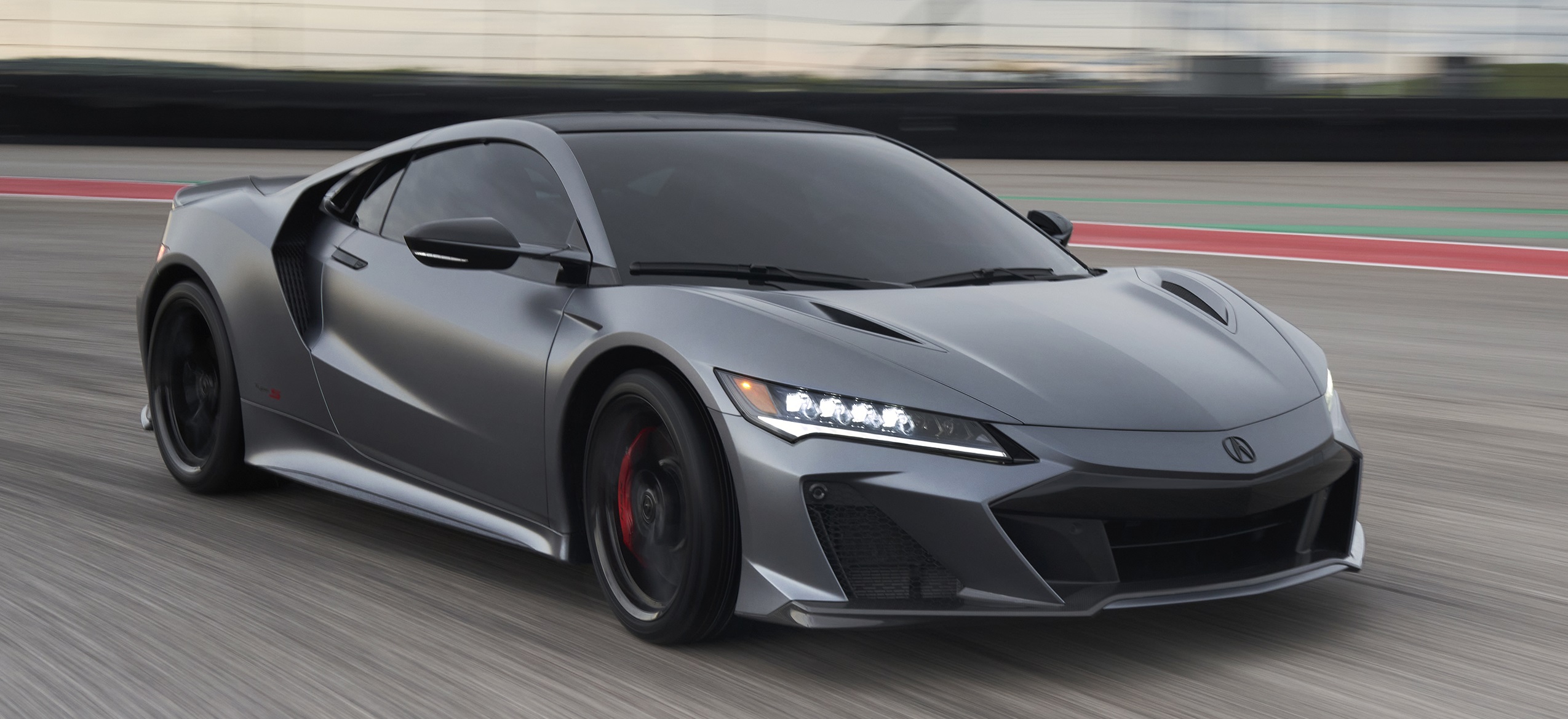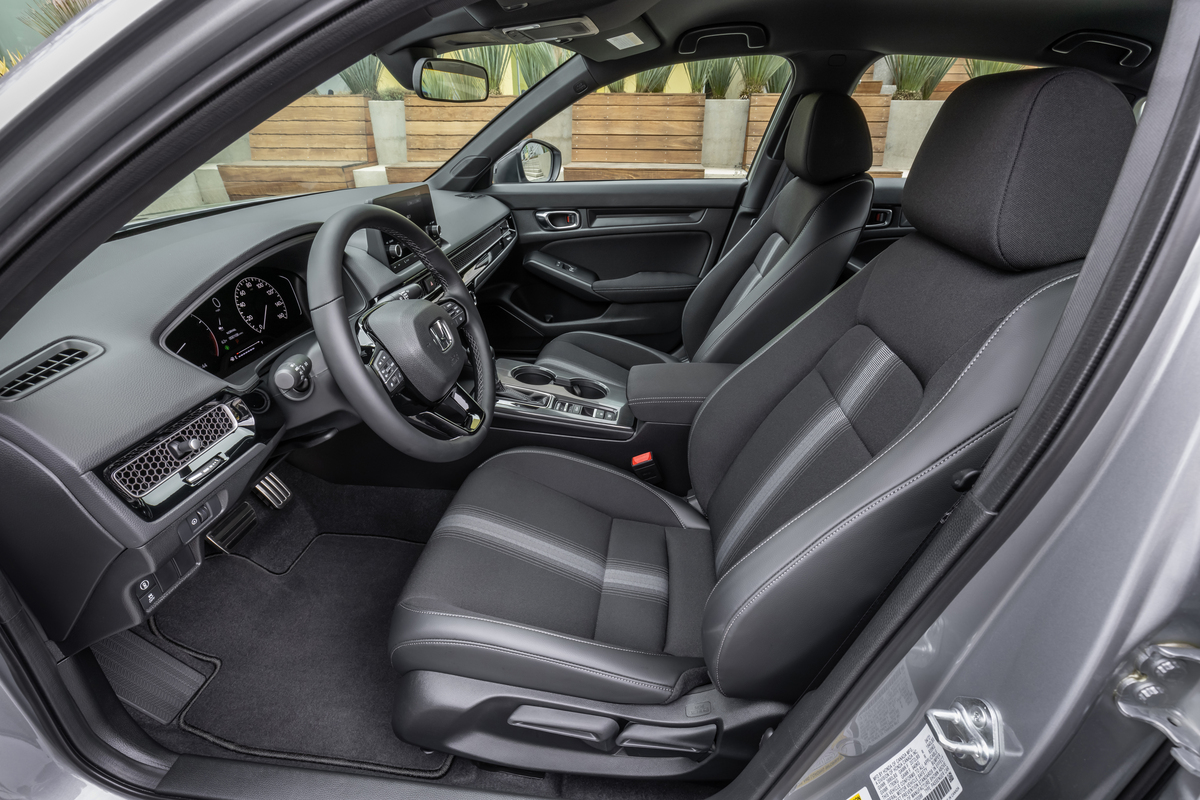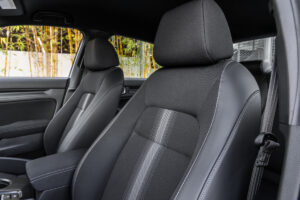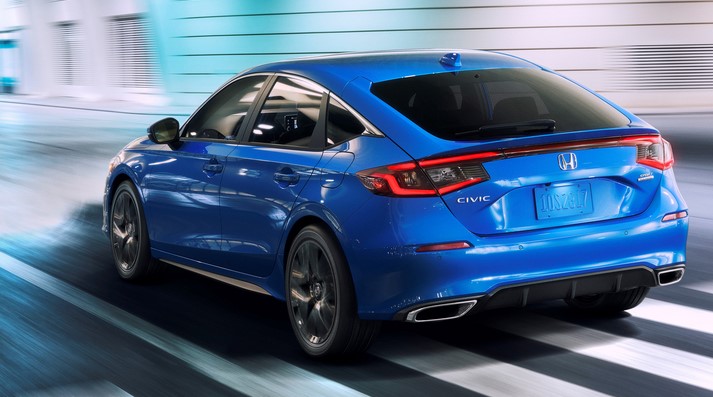Honda answers the call to the wild with a sleeves-rolled-up 2023 Pilot TrailSport

The exterior design of the 2023 Honda Pilot TrailSport is somewhat distinct from the rest of the Pilot line with a large upright grille, longer hood, flared fenders, a wider stance, and larger tires. (Photos by Honda or Mark Maynard)
Table of Contents
TrailSport Defining Features
2023 Honda Pilot Pricing
Safety Features
V-6 Powertrain and Fuel Economy
i-VTM4 All-Wheel Drive
Ride and Handling
Interior Function
Back Seats and Cargo
Observations and Considerations
Why Buy the 2023 Honda Pilot TrailSport?
Specifications
There are places I remember where dirt roads eat cars alive, juddering them to junk along hardpack washboard, mudholes, and washouts. Tread lightly has new relevance to those new to these backcountry minefields.
Blame covid for shooing city folk to the hinterland to try homesteading or just to work from home on the range.
Manufacturers have answered that call to the wild with new adventure-type vehicles. Long the territory of Jeep and Subaru, just about all carmakers now have an upfitted SUV, pickup, or minivan — whether needed or not.
Honda has taken its place at this trailhead with its midsize 2023 Pilot TrailSport, a three-row, all-wheel-drive SUV. It is based on the completely redesigned fourth-generation Honda Pilot.
The Pilot TrailSport is ideal for those who live in or have property in rural areas with unpaved roads. Or the TrailSport buyer might just like its packaging and style treatments. It looks tough and feels solid — but owners aren’t likely to bash it down the Rubicon Trail.

The TrailSport’s panoramic moonroof. (Mark Maynard)
Honda TrailSport Defining Features
The three-row midsize SUV is essentially the family wagon or minivan. There are more than a dozen choices, including the Chevrolet Traverse, Kia Telluride, Toyota Highlander, and Subaru Ascent.
Most “off-road ready” SUVs are strictly light duty. They have all-wheel drive but not a dedicated four-wheel-drive system or decoupling suspensions for more extended wheel travel.
Honda’s TrailSport is also light duty but a brawny sleeves-rolled-up effort. TrailSport is a seven-seater (not eight) with second-row captain’s chairs. Its exterior design is somewhat distinct from the rest of the Pilot line, with a large upright grille, longer hood, flared fenders, a wider stance, and larger tires.
Among the TrailSport’s unique off-road details are:
- Off-road tuned suspension;
- 8.3 inches of ground clearance, an inch more than standard Pilot trims;
- 18-inch all-terrain tires
- 3 underbody steel skid plates;
- Tow hitch and gloss black rack-ready roof rails;
- Sand and trail modes specific to the i-VTM4 all-wheel drive system;
- And a TrailCam.

18-inch Continental TerrainContact all-terrain tires (265/60).
2023 Honda Pilot Pricing
The fourth-generation 2023 Honda Pilot is sold in six two- or all-wheel-drive trim levels: LX, Sport, EX-L, TrailSport, Touring, and Elite. Honda says the top-line Elite, new for 2023, is the most luxurious Pilot ever.
Pilot starting prices range from $37,295 for the two-wheel-drive LX to $43,295 for the mid-range EX-L 2WD (add $2,100 for AWD). The Elite starts at $53,375 with standard AWD. All 2023 MSRP pricing includes the $1,345 freight charge from Lincoln, Ala.
Today’s 2023 Pilot TrailSport starts at $49,695 and was $50,150, with one option for Diffused Sky Blue metallic paint, $455.
TrailSport standard equipment includes:
- Heated steering wheel and heated front seats;
- 7-inch digital instrument display;
- 9-inch color touchscreen with wireless Apple CarPlay and Android Auto compatibility;
- Navigation system with smartphone integration;
- Qi-compatible wireless charging;
- Multiview camera system:
- All-season floor mats with the TrailSport logo;
- Leatherette upholstery with orange stitching;
- Panoramic sunroof.
A Pilot TrailSport Launch Package ($1,695) adds a hood decal, fender flares, side skirts, crossbars, cargo tray, and seatback protectors.
Check here for current pricing and offers.

TrailSport’s Interior design includes orange contrast stitching. (Mark Maynard)
Honda Pilot Safety Features
Despite its off-road direction, the TrailSport is fully decked with safety features and driver-assist technologies, known as the Honda Sensing suite.
Among the essentials are eight air bags, hill-descent control and hill-start assist, and four-wheel disc brakes large enough to stop a 5,000-pound trailer on a mountain descent — 13.8-inch ventilated front discs and 13-inch solid rear discs.
Level 2 driver-assist systems are among the most accurate for lane-centering. The collection of advanced technologies is trustworthy in the crush of commuting traffic while keeping both hands on the wheel. Cornering precision is the weak point of most systems, but in my experience, Honda’s calibrations kept the TrailSport from crossing the white line or Botts dots.
Adaptive cruise control with low-speed follow works with Traffic Jam Assist. For use in heavy commuting traffic, TJA provides lane-keeping functions at speeds below approximately 45 mph to a standstill and back up to speed.
I have become a believer in Traffic Sign Recognition, which is almost a ticket-prevention device. System cameras “see” the signs and post the speed limit in the driver gauge array. Data rates apply, but it’s still cheaper than the cost of a speeding ticket.
The other elements in the Honda Sensing suite are in the specs chart below.

Keep an eye on trail conditions with the TrailCam. (Mark Maynard)
Honda Pilot V-6 Powertrain
There is just one desirable choice of engine and transmission for the Pilot and TrailSport.
Honda says the 285-horsepower 3.5-liter V-6 is the most powerful Honda V-6 ever offered in the U.S. market. With direct and multistage injection, the engine produces 262 foot-pounds of torque at 5,000 rpm. The engine is built at Honda’s auto plant in Lincoln, Ala.
With cylinder management, the V-6 can run on three cylinders while coasting and in light power situations. Active grille shutters in the lower grille reduce aerodynamic drag — especially at cruising speeds — to the benefit of fuel economy
The engine connects with Pilot’s first 10-speed shift-by-wire automatic transmission. The version for TrailSport has drive modes of Normal, Econ, Sport, Snow, Tow, and Trail-Sand.
Shift points roll out smoothly, but Normal mode maximizes fuel economy and can be resistant to kick down for power. Sport mode gives a noticeable jump in acceleration response but holds lower gears a bit too long as if the driver is powering through a slalom course.

The 285-hp V-6 has an ultra-low CARB emissions rating of LEV3-SULEV30. (Mark Maynard)
TrailSport Fuel Economy
The Pilot TrailSport has fuel-economy ratings of 18 mpg city, 23 highway, and 20 mpg combined on the recommended 87 octane. I was able to click past the highway rating at 23.2 mpg in lengthy freeway driving. Around town, my average mileage ranged from 13 to 20 mpg. The 18.5-gallon tank could give up to 425 miles of range.
Fuel economy is adversely affected by the curb weight of 4,685 pounds, the heaviest in the Pilot line. The TrailSport’s tires and tall new grille might be mileage blockers, too. But after a week of driving, the remaining DTE — Distance to Empty — did not seem as bad as the official mileage numbers would imply. Could the grille shutters and variable cylinder management make such a mileage difference?
i-VTM4 All-Wheel Drive
Honda’s second-generation all-wheel-drive system was reinforced and has a 30 percent faster response. The revised AWD system benefits on-road traction but is especially capable in slick conditions and off-road.
The i-VTM4 system progressively distributes torque front to rear and between left and right rear wheels. Up to 70 percent of engine power can be sent to the rear axle, and 100 percent can be distributed to either rear wheel.
When cornering, i-VTM4 puts power to the outside rear wheel for more accurate turns with reduced understeer.
Trail and Sand Modes
TrailSport’s TrailMode seems to function as a low-range alternative to a traditional four-wheel-drive system. Along low-speed trails or traversing obstacles, TrailMode is effective when only two tires have traction, Honda says.
The TrailWatch camera system activates when Trail Mode is engaged. Four exterior cameras give a 360-degree view of the vehicle through the central display. A camera button on the end of the windshield wiper stalk changes camera views. There is also a front camera washer that works with the windshield washer switch on the wiper stalk.
The camera’s front view also can be used for parking views.
Sand Mode brings a quicker throttle response and allows more wheel slip to maintain momentum. Upshifts are delayed.

Levels of stash space, such as for gloves. (Mark Maynard)
TrailSport Ride and Handling
On dirt roads, the suspension is the great grader of washboard. Its suspension seemingly sweeps the dirt road to level the teeth-chattering vibration of washboard.
At highway speeds, I noticed some slight bobble in ride quality on irregular surfaces. After a few days of driving, however, it became a nonissue. The inch-taller ride height might cause that effect, or the 18-inch Continental TerrainContact all-terrain tires (265/60).
These tires have a tough-truck appearance along the sidewall, but the tread face has more of an all-season footprint than the deeper lugs of a true off-road tire. Tall sidewalls, however, allow good air-down grip and some protection for wheels from trail rash. The 18-inch wheels look rugged and have inset spokes to protect from trail damage.
When banging around off-road, the TrailSport underbelly has three steel skid plates to protect the oil pan, transmission, and gas tank. Honda says the skid plates can support the entire weight of the Pilot TrailSport crashing down on a rock. The plates are designed to minimize snagging of trail debris. And the front skid plate is vented to allow underbody airflow without debris intrusion.

The max 40.8 inches of second-row legroom is roomy even with a tall driver ahead. (Mark Maynard)
On-Road Handling
Getting to the trail at high speed is controlled and predictable in the TrailSport. The steel-spring suspension helps the driver power through ribbon-candy S-turns — a bit above posted speeds — without drama.
The steering gives measured and controlled turn-in, despite its 6-foot height and 16.6-foot length.
Often, SUVs have an awkward balance that causes understeer (push at the front wheels), but there was no tire squeal in my testing or wacky rebound returning to center.
The TrailSport’s turning circle of 37.7 feet is a half-foot shorter than the Honda Accord Hybrid sedan, which is 16.3 feet long.

The TrailSport driver area has appealing design elements but nothing flashy.
Pilot’s Interior Function
Honda does its interiors with straightforward design and logical placement of controls, buttons, and switches. Therefore, the TrailSport cabin has appealing design elements but nothing flashy.
The instrument panel is a refreshing reprieve from wide digital screens with double-tap functions. Instead, Honda gives owners dials, knobs, and pushbuttons. Such ergonomic design helps keep eyes on the road.
The midsize cabin is wide and long enough that sightlines are open across the hood — essential when off-roading — and over the shoulder and out the tall rear glass.
Leatherette seat upholstery looks very leatherlike but might be more durable over time.
Honda’s front Body Stabilizing Seats are designed to support the entire body. A resin mat gives added support from the pelvis to the lumbar spine for a more stable and solid seating feel.
The driver seat has 10-way power adjustment, which includes seat-bottom tilt that is important for an ideal position. The front passenger seat is just four-way power, an unfortunate budget cut in a $50K vehicle. Front seat passengers should have height adjustment and lumbar, and the other eight power adjustments of the driver.
Heated front seats and a heated steering wheel are part of the TrailSport package. But ventilated front seats would be welcome, too.
Pilot Touring and Elite trims have a removable center section of the 40/20/40 bench — the removed seat stores neatly in the space under the cargo floor. For TrailSport with second-row captain’s chairs, there is a flat base between the seats.

Almost 4 feet wide at the cargo-area opening. (Mark Maynard)
Abundant Storage Areas
Honda gave its new Pilot the storage capacity of its Odyssey minivan.
- The front seat armrest console has a deep bin that can fit a full-size tablet;
- Passenger-side instrument panel shelf, handy for sunglasses, earbuds, and small items;
- Shift console e-bin, wide and deep enough to lay two smartphones side-by-side;
- 14 cup holders, including eight that will fit 32-ounce bottles;
- Door panels have tiers and slots, useful to stash gloves, maps, tire-pressure gauge.
Extensive Cabin Soundproofing
Honda went deep into soundproofing the new Pilot. The vehicle architecture is a study in body sealants, structural glue, and electronics to blunt the vibration and noise from wind, the engine, and the road. Among the noise abatement treatments are:
Sound insulation: Sound-deadening material is applied under the floors and hood, in the lower dashboard, over the center transmission-exhaust tunnel, in the ceiling and doors, inside the front and rear wheel wells, and in the doors. Elite models get additional sound-deadening material throughout the cabin.
Acoustic spray foam: Foam is piped into hollow windshield and roof pillars.
Melt sheet: High-density, sound-deadening “melt sheet” is applied to floor areas, including under all the seats and in the footwells of all three rows.
Thicker carpet: All Pilot models receive denser carpeting for additional sound deadening. And the Elite’s carpet is even denser.
Acoustic glass: TrailSport, EX-L, Touring, and Elite have acoustic laminate glass windshields. Touring and Elite also have acoustic front-side windows.
Active Noise Cancellation: Intrusive background noise is electronically reduced by cabin microphones through the audio system. Honda says it is especially useful when the V-6 engine runs in cylinder deactivation mode. The ANC system and a second layer of Active Sound Control use cabin speakers to enhance the vehicle’s engine, intake, and exhaust sounds. The audio system does not have to be on for noise cancellation.

Electronic temperature and fan controls in the second row. (Mark Maynard)
TrailSport Back Seats and Cargo
Second-row legroom is up by 2.4 inches, now at 40.8 inches, which is roomy even with a tall driver ahead. Headroom is also tall at 40.2 inches, and the second-row seats have up to 10 angles of recline (an additional 4 degrees of rearward recline compared to the outgoing Pilot).
A flat floor is helpful for foot space and storing gear crosswise.
Tip and slide seats give easy entry to the third row. Legroom is typically third-row tight but an inch longer than some other SUVs at 32.5 inches. More accessible LATCH anchors make installing front and rear-facing child seats easier. Additional forward tilt range improves entry and exit to the third row.
The base of the third row is raised by about 2 inches for a more natural seating position, Honda says. But it also is a key enhancement to improve views and to trim motion sensitivity for children traveling in the way back.
The third row is well stocked with large drink holders, air vents, and a USB charging port.

The third row is well stocked with large drink holders, air vents, and a USB charging port.
Cargo Space
There are a couple of capacity considerations with the seven-seat 2023 Honda Pilot TrailSport. The cargo space has a tall floor with a lower entry height of 31 inches. With both back seats folded, there is 7 feet in length, which is good for packing gear. But because the 40/20/40 second row needs the center seat, there is a wide gap between the seatbacks, which means no sleeping in the cargo area. And campers do use the back end of their vehicles for shelter when needed.
There is a 110-volt power outlet in the second row, but off-roaders might also prefer a household plug in the cargo area. It would be a handy location to plug in an inflator for airing-up tires, inflating air mattresses, or for campsite tunes and lighting. However, serious off-roaders use a stronger AC compressor that connects to the vehicle’s cranking battery.

Fold both back seats for 7 feet in length. (Mark Maynard)
TrailSport Observations and Considerations
If you can’t sleep in the cargo area, there is a Honda tent accessory, $408. The 10-by-10-foot tent claims to sleep six and includes a rainfly (6-by-6 feet) that also serves as an entry canopy.
Four of six paint colors are a $455 upsell, including the Diffused Sky Blue Pearl on the tester. Diffused Sky Blue is bright and attractive (reminding me of Petty Blue), but it also is a metallic paint and almost too pretty to “pinstripe” with trail brush.
A roller cargo cover is not among the standard equipment, but a Function Package ($405) adds a cover, cargo net, and first-aid kit.
A Towing Package, necessary for the 5,000-pound towing capacity, includes the trailer hitch harness and hitch ball mount, $305.

Usable space under the cargo floor. On other trim levels, this is where the 2nd-row center seat can be stored. (Mark Maynard)
Why Buy the 2023 Honda Pilot TrailSport?
I liked the dust-devil durability of the Pilot TrailSport. The more I drove it, the more I liked solid it feels, how quietly it rolls, and how tight it can turn on a trail.
Whether the owner goes camping or not, the treatment is just as functional in town as on the trail. And it cleans up nicely when needed.

The TrailSport is not an aggressive off-roading vehicle, but it has credible driving characteristics.
2023 Honda Pilot TrailSport Specifications
Body style: midsize, 3-row, 7-seat SUV with AWD
Engine: 285-hp, direct-injected 3.5-liter V-6 with variable cylinder management; 262 lb.-ft. torque at 5,000 rpm
Transmission: 10-speed shift-by-wire automatic transmission with Trail Torque Logic; Intelligent Variable Torque Management AWD System with drive modes of Normal, Econ, Sport, Snow, Tow, and Trail-Sand
Fuel economy: 18/23/20 mpg city/hwy/combined; 87 octane fuel recommended
BY THE NUMBERS
Fuel tank: 18.5 gallons
Cargo space: 18.6 cubic feet behind 3rd row; 48.5 cu.ft. 2nd row folded;
Front head/leg room: 40.5/41 inches
2nd-row head/leg room: 40.2/40.8 inches
3rd-row head/leg room: 39.3/32.5inches
Length/wheelbase: 200.2/113.8 inches
Width/height: 78.5/72 inches
Track: 67.2/67.4 inches (slightly less than standard Pilot)
Approach-departure angles: 19.8/19 degrees front/rear
Front-rear overhangs: 40.1/46.3 front-rear (slightly longer rear overhang than standard Pilot)
Towing capacity: 5,000 pounds
Curb weight: 4,685 pounds
Turning circle: 37.7 feet
BRAKES, TIRES-WHEELS, STEERING, SUSPENSION
Suspension: Front MacPherson struts and multilink rear; front tubular stabilizer bar of 24.2 mm and rear solid 18 mm;
Steering: electric power assist; turning circle 37.7 feet;
Brakes: 13.8-inch ventilated front discs and 13-inch solid rear discs;
Wheels and tires: 18-inch Shark Gray fully painted alloy wheels with black lug nuts; rugged terrain tires 265/60, with a full-size spare
FEATURES
Standard equipment includes: Smartkey locking and push-button ignition, smart entry with walk away auto-lock (all doors), electric parking brake, panoramic moonroof (tilt and slide), tri-zone climate system, 12-speaker Bose audio system with subwoofer, 5 2.5-Amp USB Type-A charging ports, 1 3.0 front Amp USB Type-A charging ports, CabinTalk in-car PA system, lockable glove box, 10-way power driver seat, 4-way power front passenger seat, flat-folding 2nd-row 40/20/40 seats, 60/40 flat-folding 3rd-row bench seat, 2nd-row door sunshades, LED map lights all rows, heavy-duty floor mats (all rows), LED exterior lighting, acoustic laminate windshield and front side glass, heated windshield, power liftgate with hands-free access, 3 underbody skid plates with front recovery point, trailer hitch receiver with rear recovery point;
Safety features include: 8 air bags, stability and traction controls, hill-descent control and hill-start assist, auto high-beam headlights, parking sensors (4 front and 4 rear);
Driver-assist technologies: Adaptive cruise control with low-speed follow, Collision Mitigation Braking, Road Departure Mitigation, Forward Collision Warning, Lane Departure Warning, Lane Keeping Assist, Traffic Sign Recognition, Traffic Jam Assist, Low-Speed Braking Control, Blind Spot Information System, Cross Traffic Monitor, Driver Attention Monitor.
2023 HONDA PILOT TRAILSPORT PRICING
Base price: $49,695, including a $1,345 freight charge; price as tested $50,150
Options on test vehicle: Diffused Sky paint $455
Where assembled: Lincoln, Ala
Warranty: 3-years/36,000-miles with roadside assistance














































